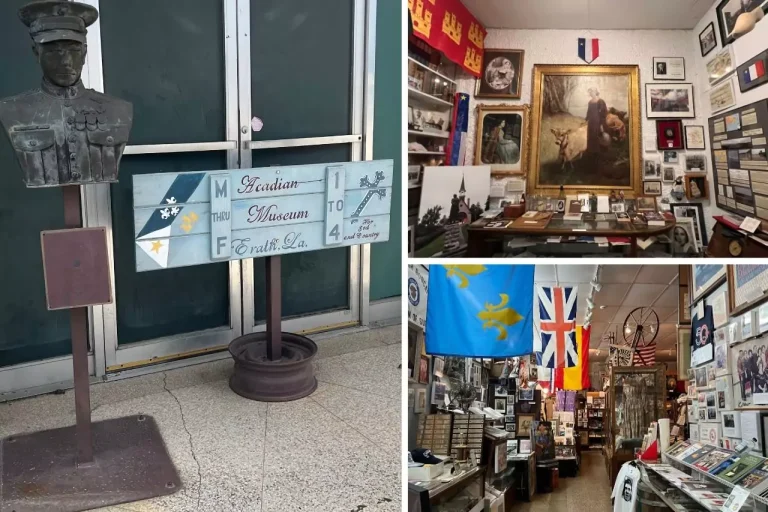Located in the heart of Erath, Louisiana, the Acadian Museum is much more than a museum—it’s a celebration of Cajun culture and a testament to the resilience of its people. Known as “the most Cajun place on Earth,” Erath’s charm lies in its rich history, vibrant cultural contributions, and unwavering connection to its Acadian roots. The museum stands as a beacon of hope for the town, aiming to use its unique heritage to breathe new life into the community through tourism, education, and cultural preservation.
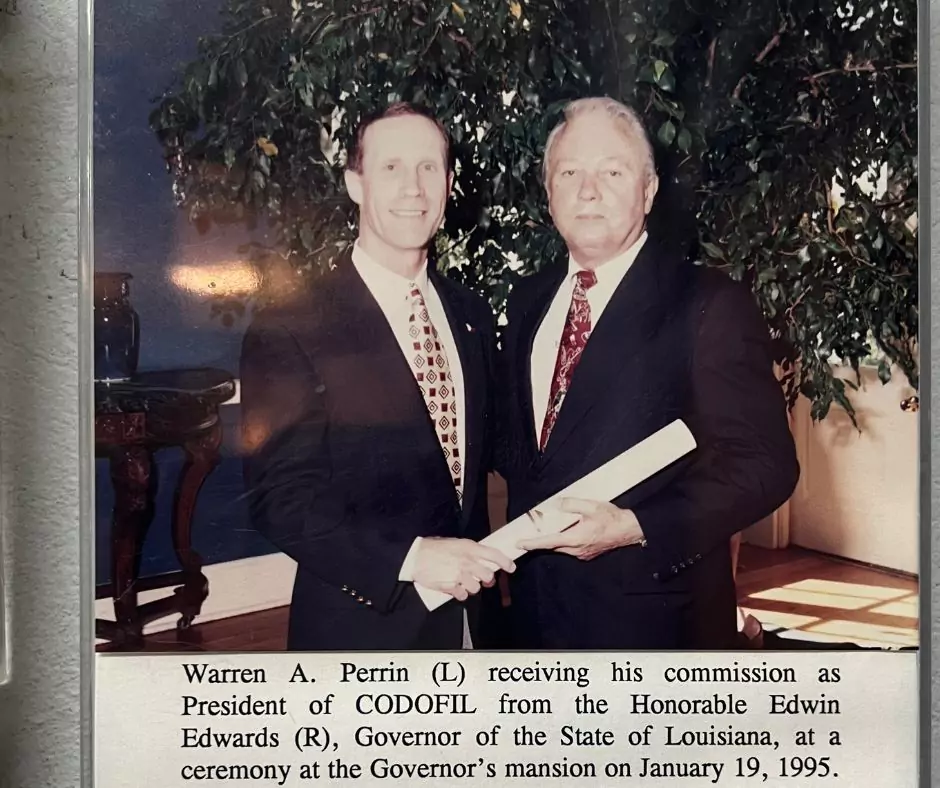
The museum is a labor of love for its founder, Warren A. Perrin, a historian, author, and lifelong advocate for Cajun heritage. What started as a small collection of donated artifacts has grown into a treasure trove of over 6,000 items that tell the story of the Acadians’ journey, struggles, and triumphs. It’s not just a building filled with history—it’s a source of pride for the people of Erath and a symbol of their determination to keep their culture alive.
Table of Contents
The History of the Acadian Museum
Founding and Early Beginnings
The Acadian Museum was born from a community-driven effort to preserve the town’s history. Its story began in the most unexpected way: with a single photograph. Warren A. Perrin, the museum’s founder and chairman, recalls how a client brought him a framed photo of a boy named Placid Richard, who tragically passed away after playing with his friends on a hot summer day. That photograph became the seed from which the museum grew. Over time, residents began donating mementos, photographs, and artifacts, transforming the building into what it is today—a vibrant cultural hub filled with over 6,000 pieces of history.
Joseph Beausoleil Broussard and the Cajun Journey
Central to the museum’s mission is the remembrance of the Grand Dérangement, the forced deportation of Acadians by the British in 1755. This tragic event displaced over 15,000 Acadians, with many perishing from starvation, disease, and shipwrecks. Warren Perrin has been instrumental in keeping this history alive, authoring a petition to the British Crown that resulted in the Queen’s Royal Proclamation. This apology, one of only six issued in the British Empire’s 1,200-year history, acknowledges the suffering caused by the deportation. A copy of the proclamation hangs prominently in the museum, establishing July 28th as a day of commemoration for the lives lost.
The museum also honors Joseph Beausoleil Broussard, a leader who guided 202 Acadians to Louisiana during the deportation. Broussard and his group settled along the Bayou Teche near Loreauville, laying the foundation for Louisiana’s Cajun culture. Their resilience in the face of immense hardship remains a powerful story of survival and cultural preservation.
For those interested in exploring more about the Acadian journey and its cultural legacy, the Smithsonian Folkways Recordings offer excellent insights into how Cajun music evolved from these historical roots.
Unique Exhibits That Define the Acadian Museum
1. The Acadian Boy’s Cape and Brown Cotton Textiles
One of the museum’s most prized possessions is a rare Acadian boy’s cape, an artifact that symbolizes the resourcefulness of the Acadian people. This piece is part of an extensive textile collection, which also includes eight spinning wheels and 50 blankets woven from brown cotton, a material unique to Louisiana.
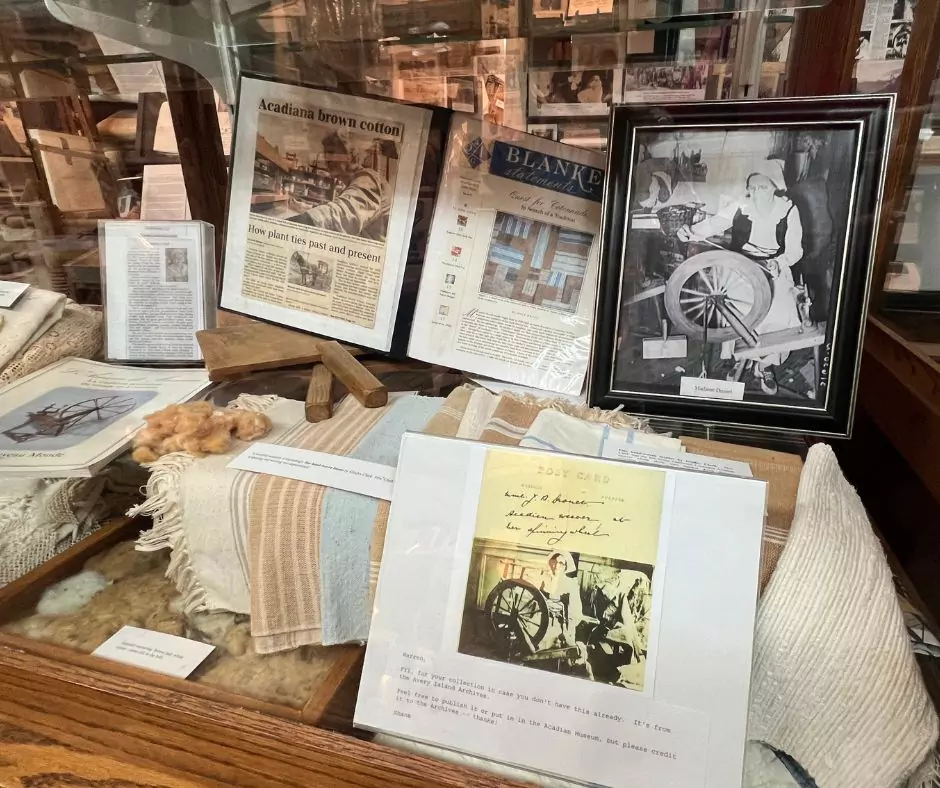
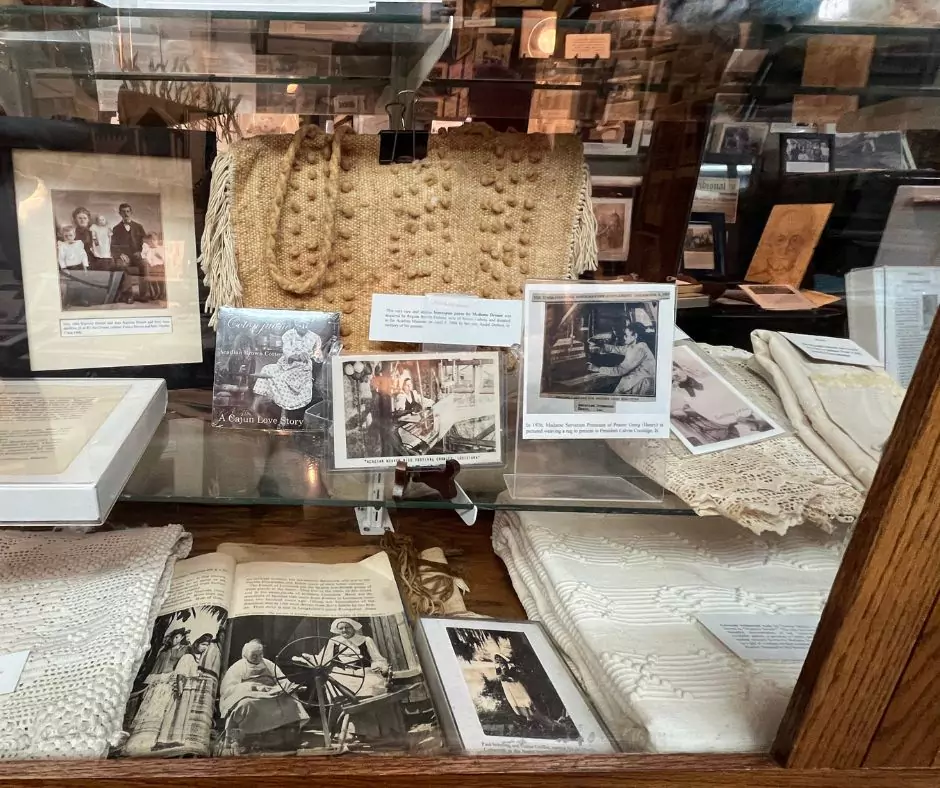
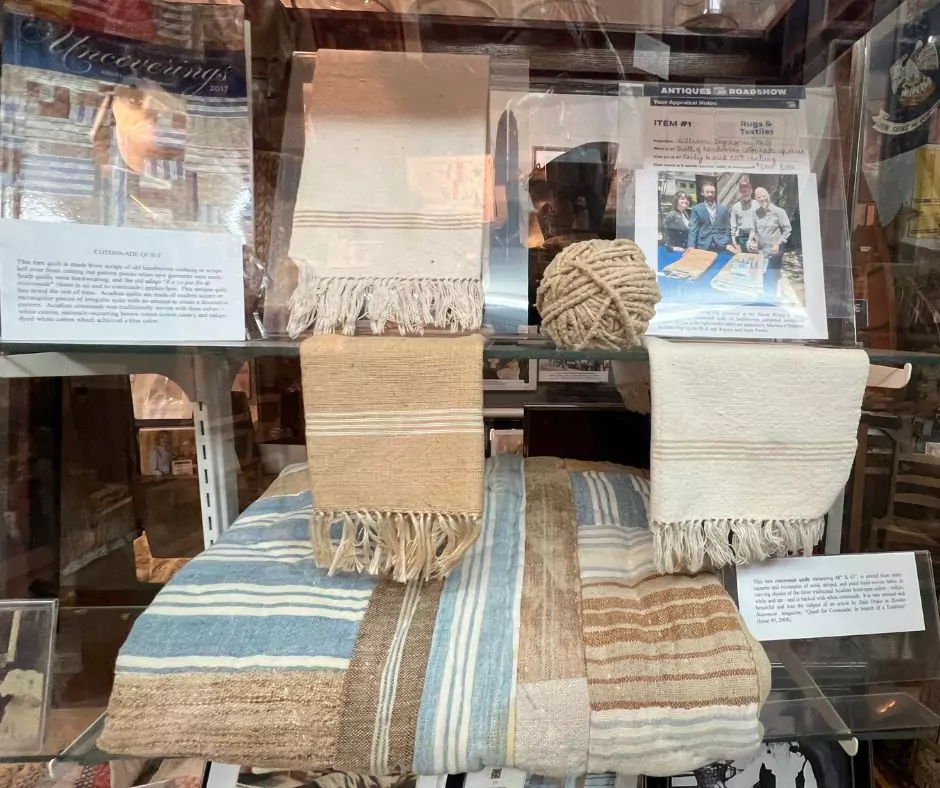
Once considered undesirable due to its short fibers and dull color, brown cotton became a staple for Cajun weavers, who transformed it into warm, durable blankets. This ingenuity is a testament to their ability to make the most of what they had.
2. DL Menard: The Cajun Hank Williams
The museum proudly celebrates the life and legacy of DL Menard, one of Erath’s most famous residents and a Grammy-nominated musician. Known as the “Cajun Hank Williams,” Menard gained international fame for his song “La Porte En Arrière” (The Back Door), a Cajun classic that remains a staple at dance halls to this day.
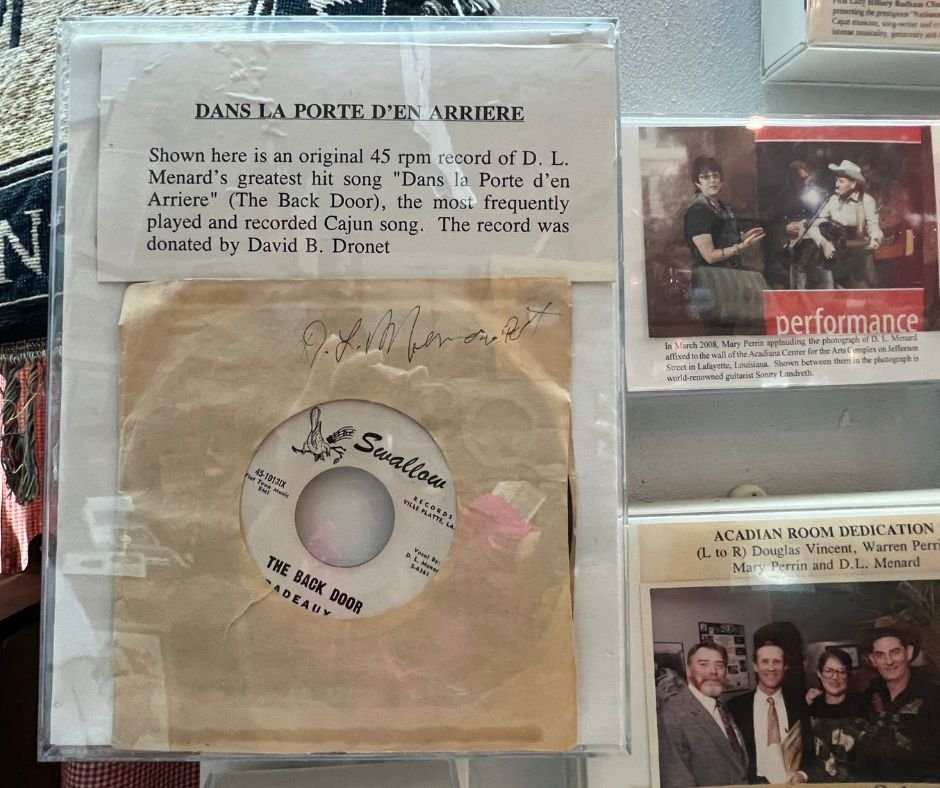
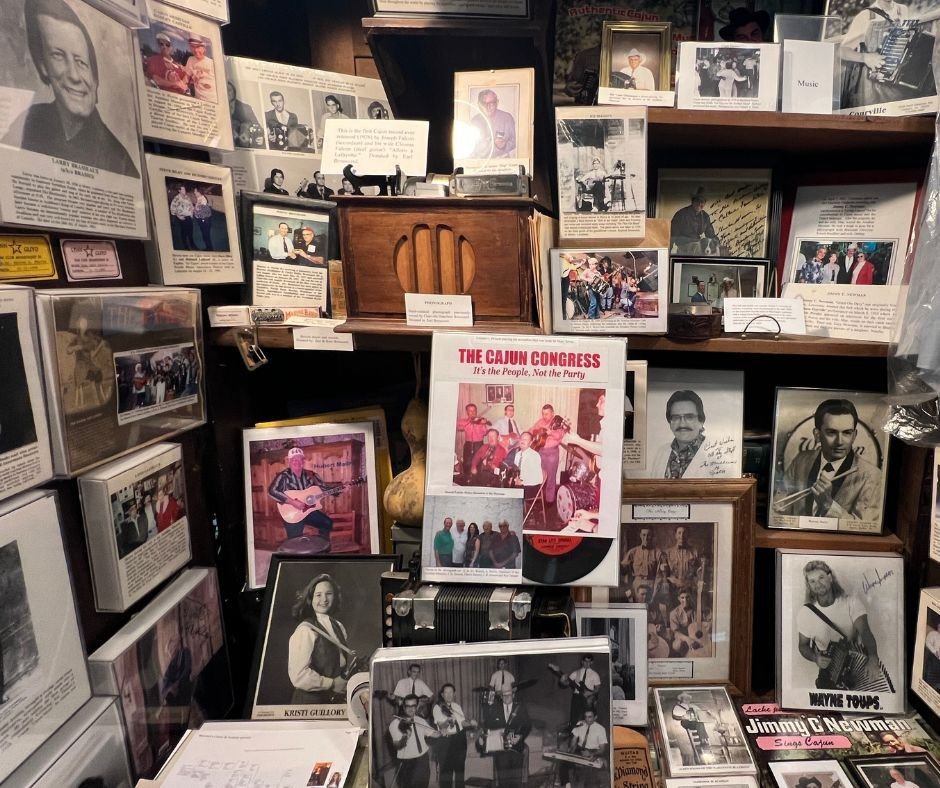
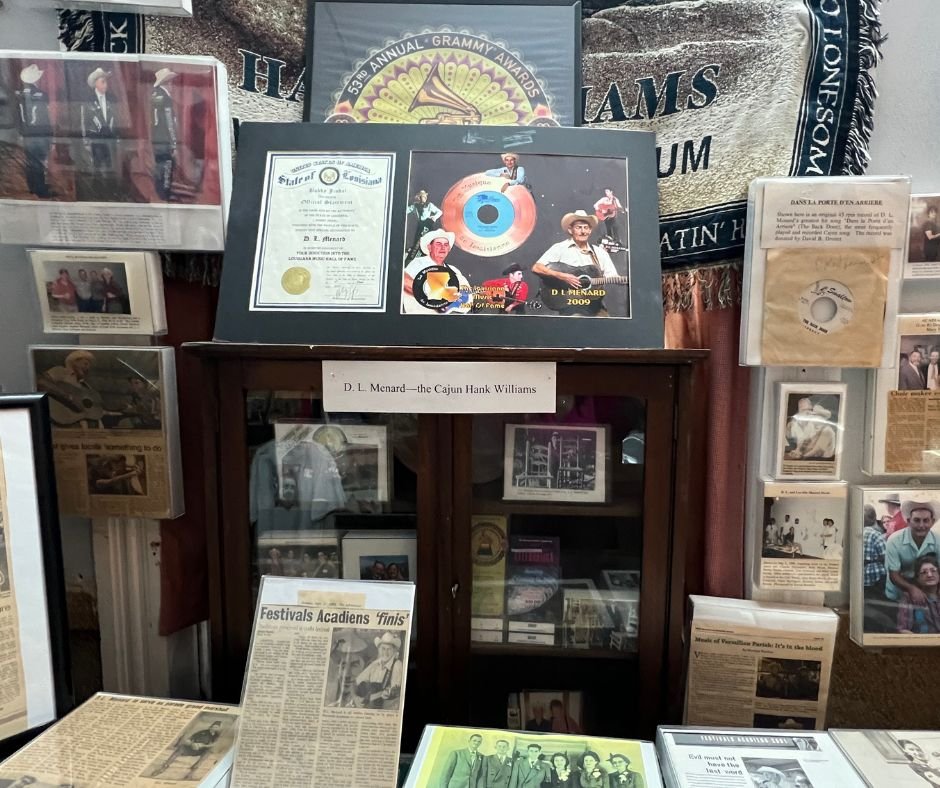
Despite his global success, Menard stayed true to his roots, running a chair-making business in Erath. His story is a reminder of how Cajun culture thrives on the balance between tradition and creativity.
3. Dudley LeBlanc and the Hadacol Phenomenon
Another fascinating exhibit is dedicated to Dudley LeBlanc, a Louisiana politician and entrepreneur who invented the medicinal tonic Hadacol. Containing 14% alcohol, Hadacol became a sensation during Prohibition, marketed as a cure-all for various ailments.
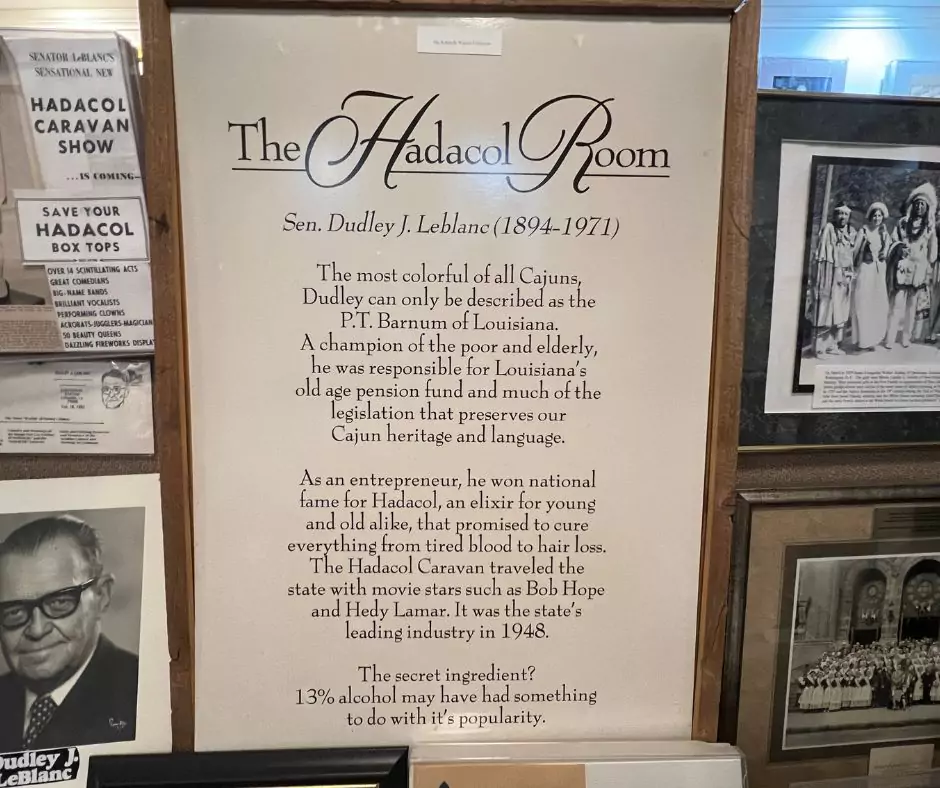
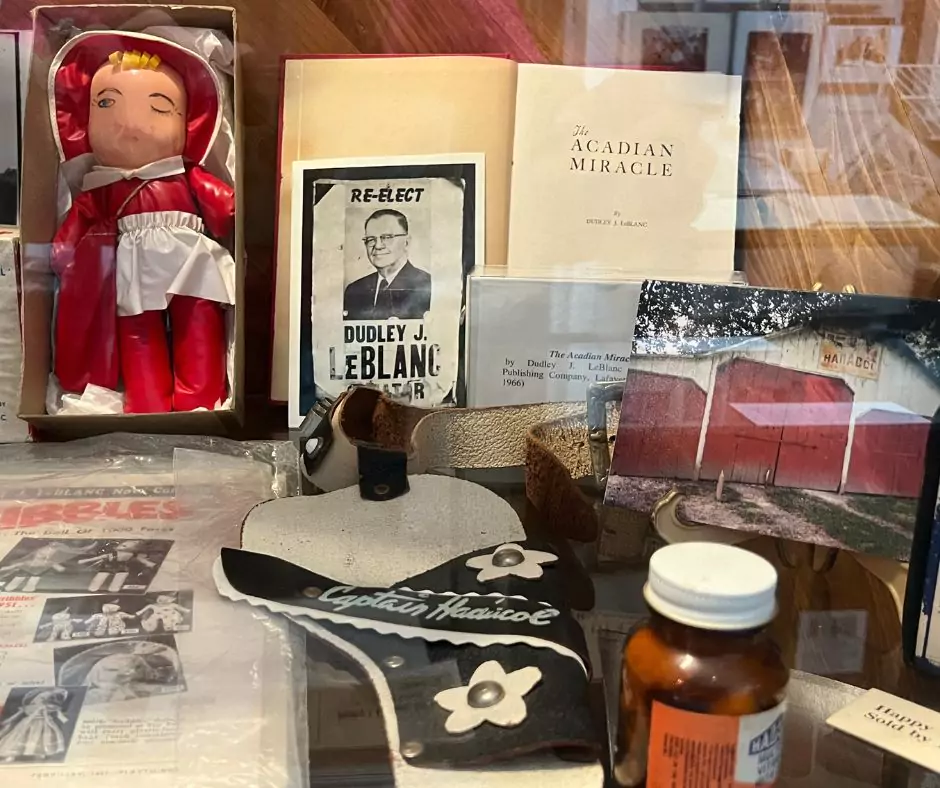
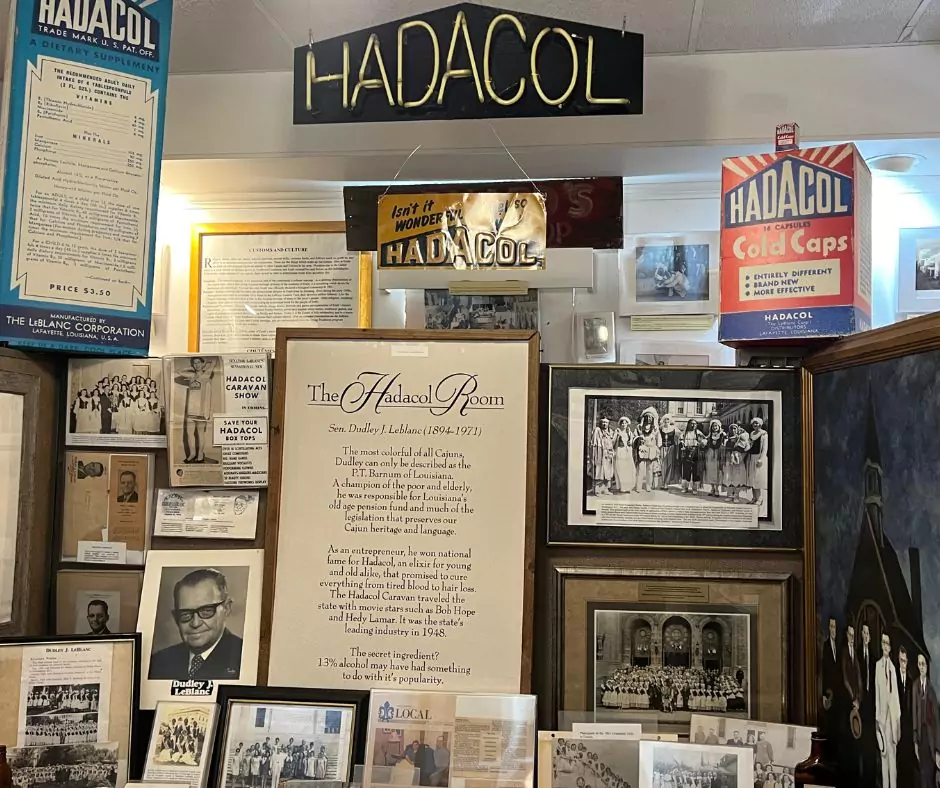
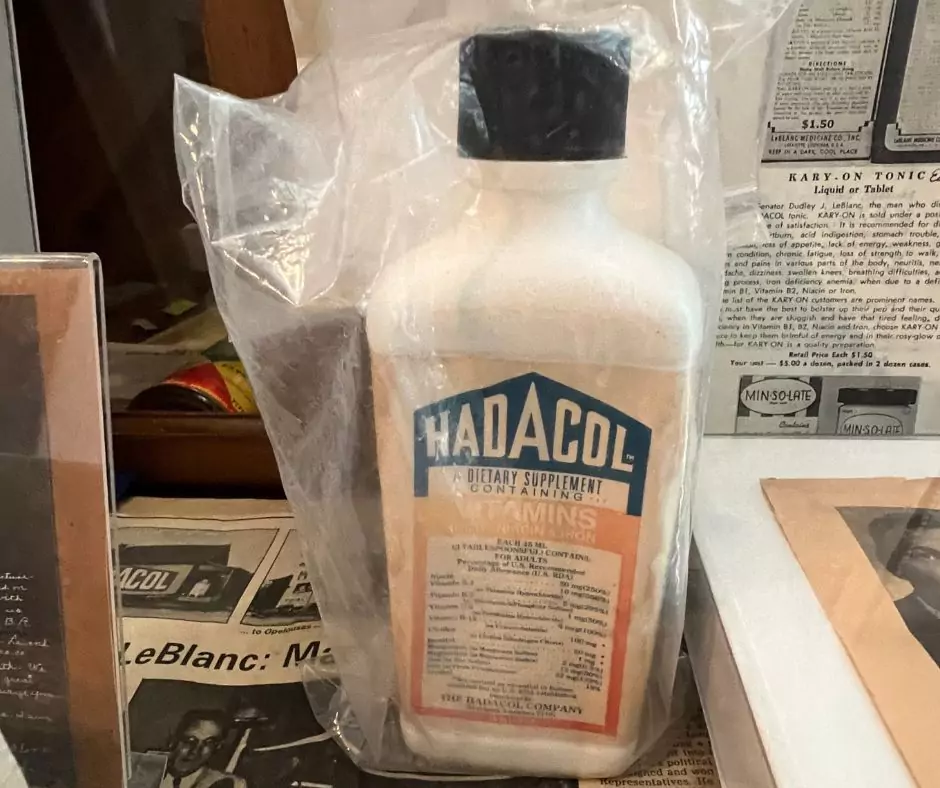
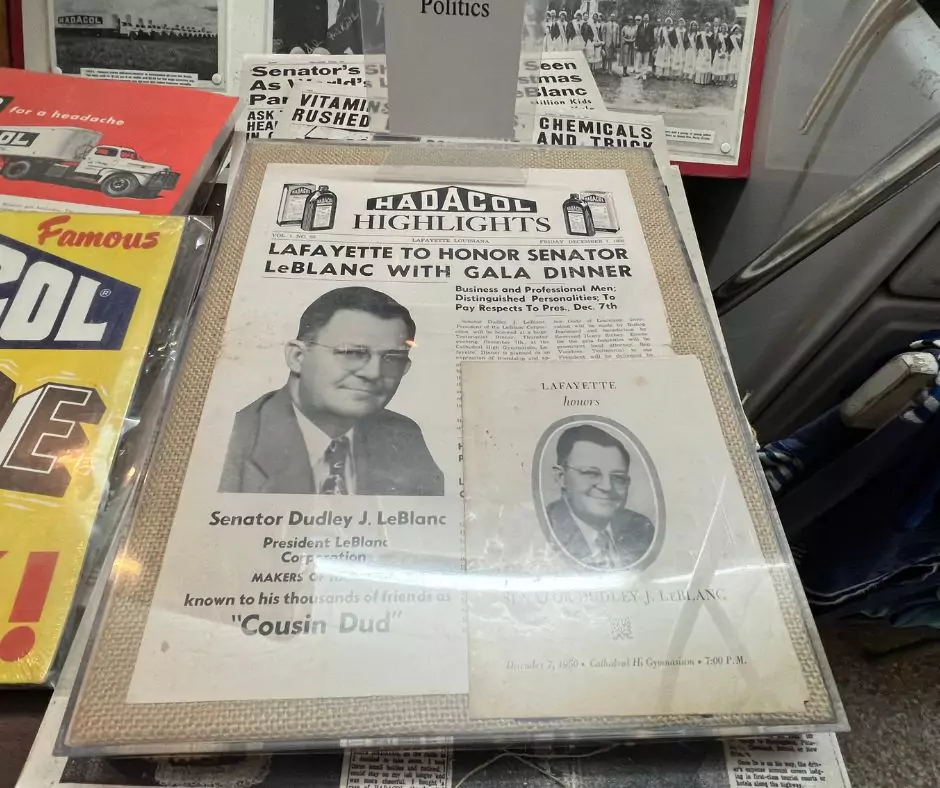
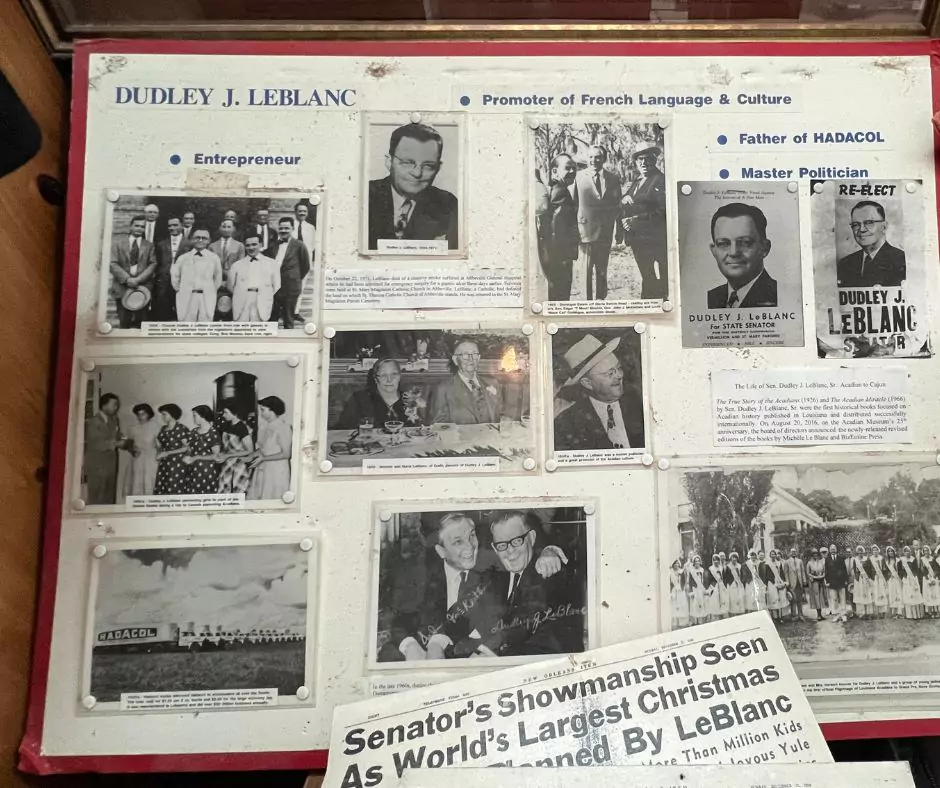
LeBlanc’s marketing genius turned the tonic into a national phenomenon, with Hadacol caravans featuring big-name stars performing at shows where entry required two Hadacol box tops. Visitors to the museum can see the original Hadacol recipe, offering a glimpse into this quirky and entertaining chapter of Cajun history.
4. The Queen’s Apology: Honoring the Acadian Deportation
One of the museum’s most significant historical documents is a copy of the Queen’s Royal Proclamation, a formal apology for the illegal deportation of 15,000 Acadians from Nova Scotia in 1755. This tragic event, known as Le Grand Dérangement, led to the deaths of thousands through starvation, disease, and shipwrecks.
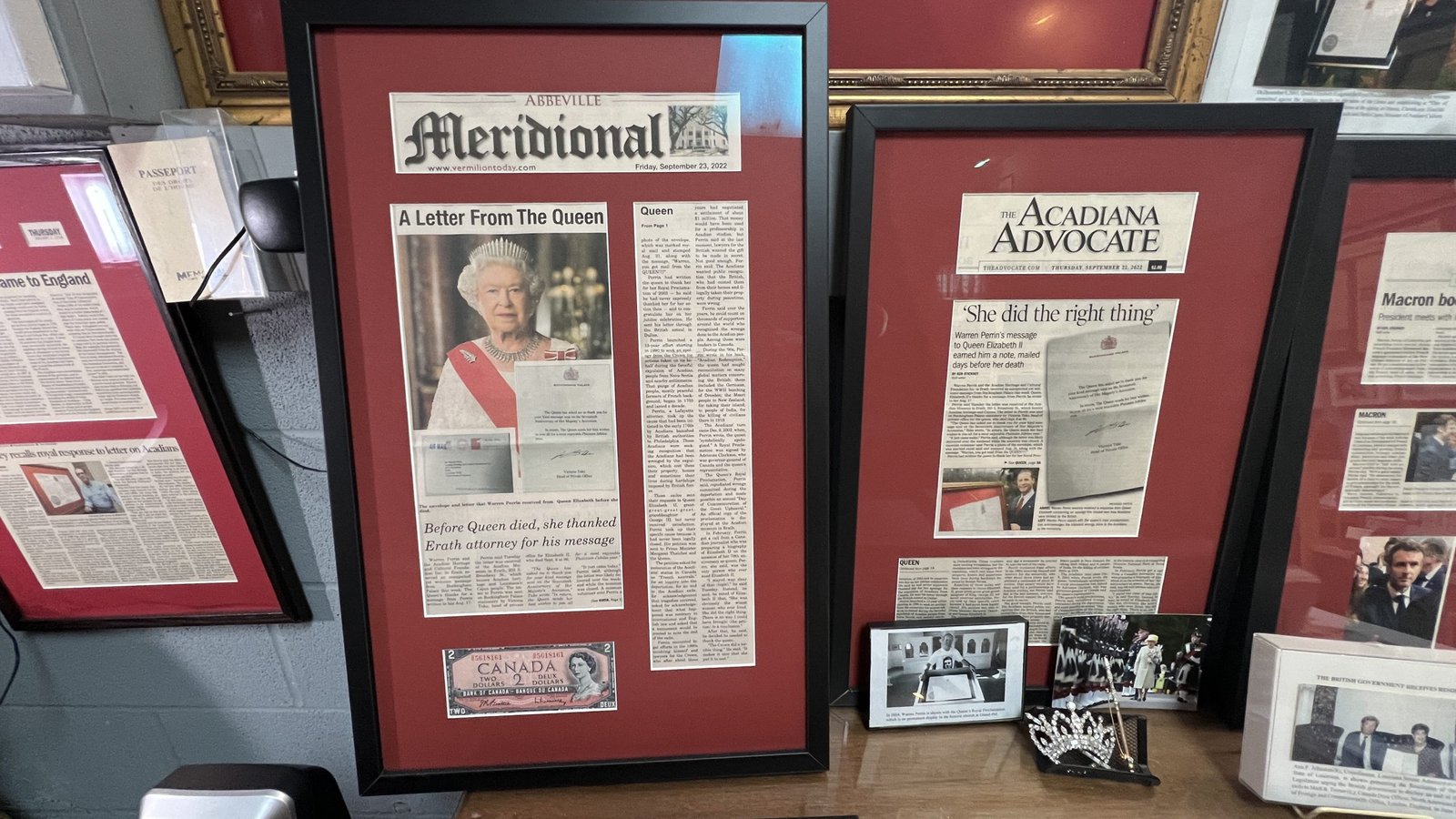
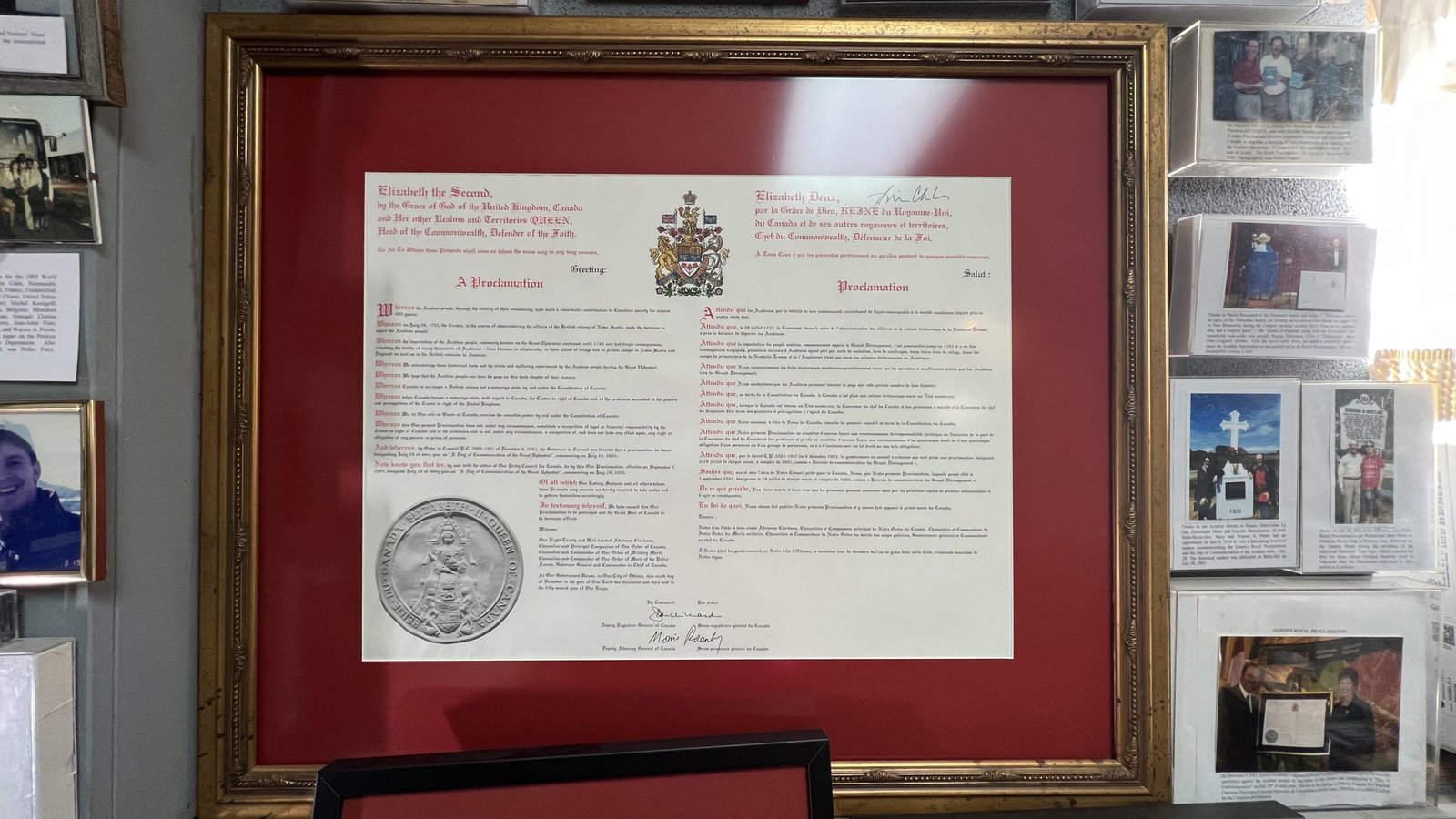
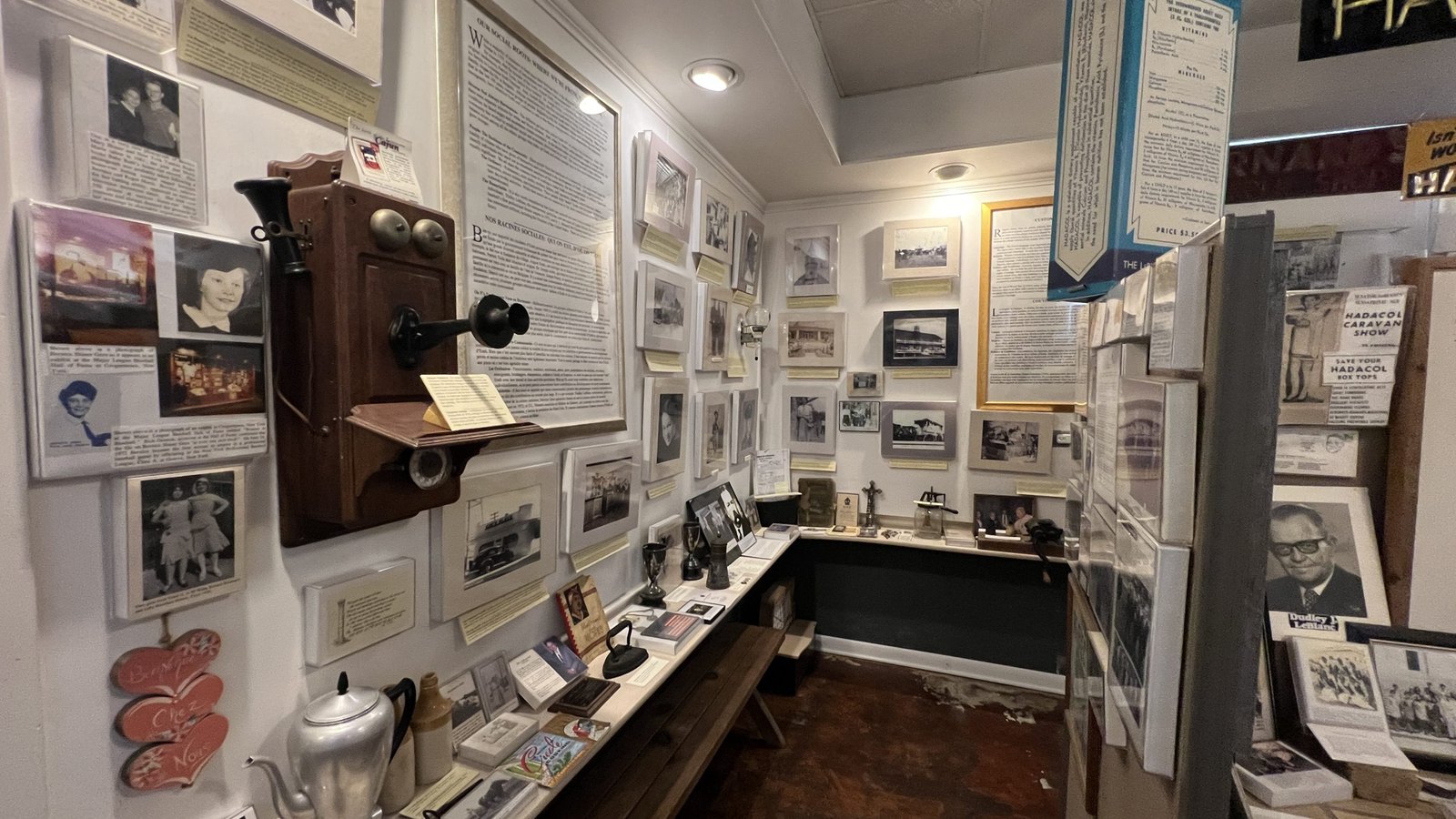
Many survivors settled in Louisiana, where they built the foundation of Cajun culture. The proclamation, which established July 28th as a day of commemoration, hangs in the museum as a testament to the resilience of the Acadian people and their struggle for recognition.
5. The Story Behind the Museum’s Founding
The Acadian Museum itself began with a single photograph—a portrait of a young boy named Placid Richard, donated by a local resident, Miss Reeba Dugar Narine. Placid tragically passed away from a brain hemorrhage after his friends dumped ice water on his head during a hot summer day. The photo, and the story behind it, inspired Erath residents to contribute their own artifacts and mementos, eventually transforming the space into a community-driven museum.
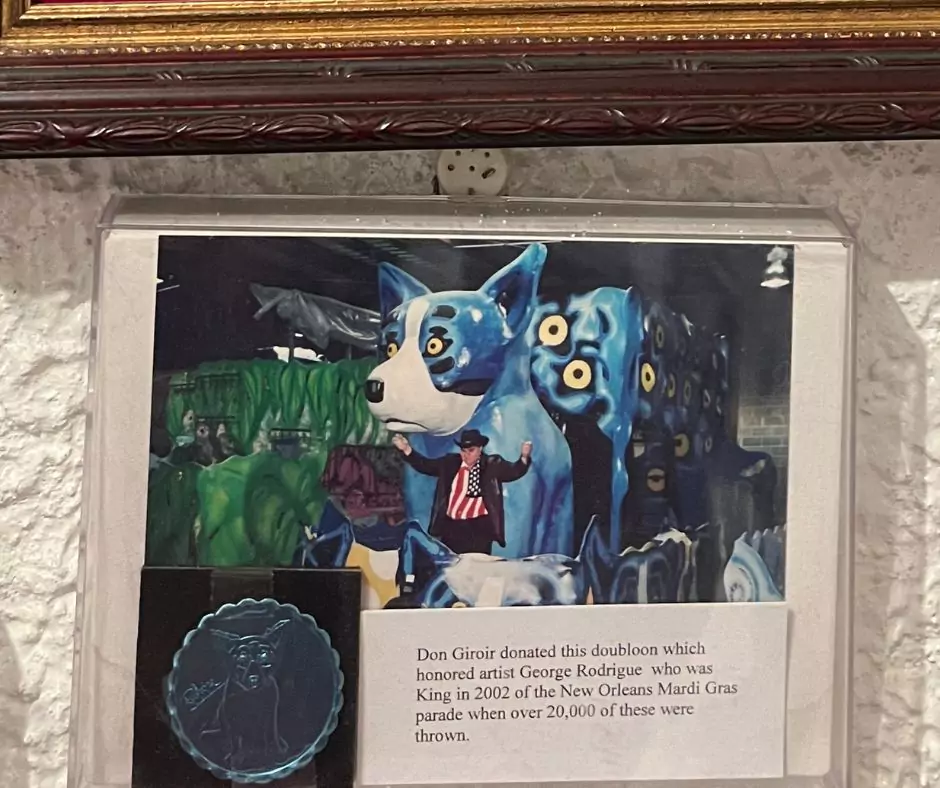
Among the many donations that followed, the museum received a doubloom from Don Giroir, commemorating artist George Rodrigue, best known for his iconic “Blue Dog” paintings. This doubloom honors Rodrigue’s contribution as King of the 2022 New Orleans Mardi Gras Parade, where over 20,000 of these were thrown to the crowd. Rodrigue’s connection to the museum is further cemented by his donated paintings, including one depicting the pilgrimage of Louisiana Cajuns to Nova Scotia, which continues to inspire visitors.
Today, the museum continues to grow, fueled by the pride and passion of Erath’s people, preserving Cajun culture for future generations.
Revitalizing Erath Through Culture
The Acadian Museum isn’t just about preserving history—it’s also about shaping the future. Warren Perrin envisions turning Erath’s vacant storefronts into a museum complex, with five satellite locations dedicated to different aspects of Cajun culture. This ambitious plan would transform the town into a cultural and economic hub, attracting visitors, businesses, and artists. It’s a bold vision, but one that reflects the resilience and resourcefulness of the Cajun people.
By leveraging its rich history and unique cultural assets, the museum hopes to create a brighter future for Erath, proving that heritage can be a powerful economic catalyst. For more ideas on exploring Louisiana’s attractions, check out Vermilion Parish Tourism, which highlights the region’s hidden gems.
Preserving Cajun Language and Identity
One of the museum’s most important missions is to preserve the Cajun French language, a cornerstone of cultural identity. Erath remains one of Louisiana’s few predominantly French-speaking communities, but this linguistic heritage is at risk of fading. Through its exhibits and educational programs, the museum emphasizes the importance of keeping the Cajun language alive for future generations. For an even broader look at Cajun history, you might also explore the Acadian Memorial in St. Martinville, which complements the museum’s mission beautifully.
Planning Your Visit to the Acadian Museum
Location and Hours
The Acadian Museum is located in downtown Erath, Louisiana—a charming town that feels like a step back in time. The museum is open to visitors throughout the week, offering guided tours that provide a deeper understanding of its exhibits.
Interactive Experiences
Visitors can enjoy hands-on experiences, from spinning wheel demonstrations to live Cajun music performances. The museum also hosts community events and educational programs, making it a great destination for families.
Nearby Attractions
While in Erath, don’t miss the chance to explore other cultural gems in the area. From authentic Cajun restaurants to live music venues, the town offers a vibrant slice of Louisiana life. For a broader view of the region’s attractions, check out this Acadian Cultural Center Tours (add expedia affiliate link) , a helpful resource for planning your trip.
Why the Acadian Museum Is Worth a Visit
The Acadian Museum is more than just a place to learn about history—it’s a celebration of the creativity, resilience, and spirit of the Cajun people. From its fascinating exhibits to its ambitious vision for revitalizing Erath, the museum offers something for everyone. Whether you’re a history buff, a music lover, or simply curious about Cajun culture, this hidden gem in Louisiana is a destination you won’t want to miss. Plan your visit to the Acadian Museum and immerse yourself in the heart of Cajun heritage.
FAQs About the Acadian Museum
-
What is the Acadian Museum known for?
The Acadian Museum is famous for its extensive collection of Cajun artifacts, its role in preserving Louisiana’s French-speaking heritage, and its celebration of local legends like DL Menard and Dudley LeBlanc.
-
Who was Joseph Beausoleil Broussard?
Broussard was a leader of the Acadians who guided them to Louisiana after their deportation from Nova Scotia in 1765. His legacy is a cornerstone of Cajun culture.
-
What is Hadacol, and why is it significant?
Hadacol was a medicinal tonic invented by Dudley LeBlanc. Its popularity and marketing success made it a cultural phenomenon in mid-20th-century Louisiana.
Explore More Posts About What Louisiana Has to Offer:
LSU Museum of Art, Connecting Visitors to Baton Rouge
Why You Can’t Miss the Delta Music Museum in Ferriday
Explore the Rich Military Heritage at LSU Military Museum
The National Hansen’s Disease Museum
The Legacy of Louisiana Sports Hall of Fame & History Museum









